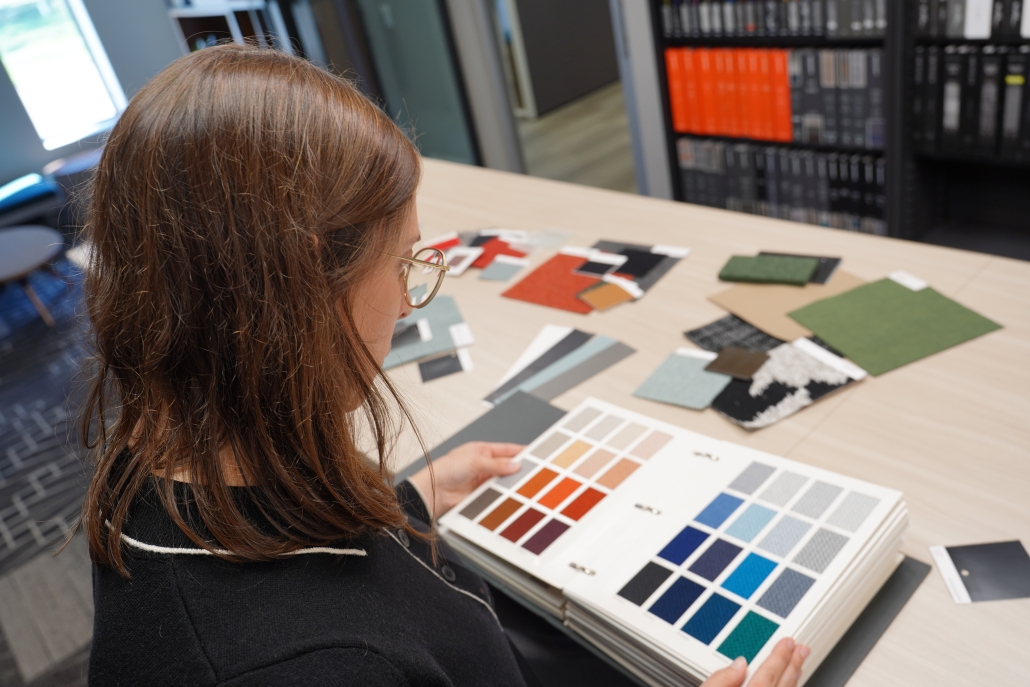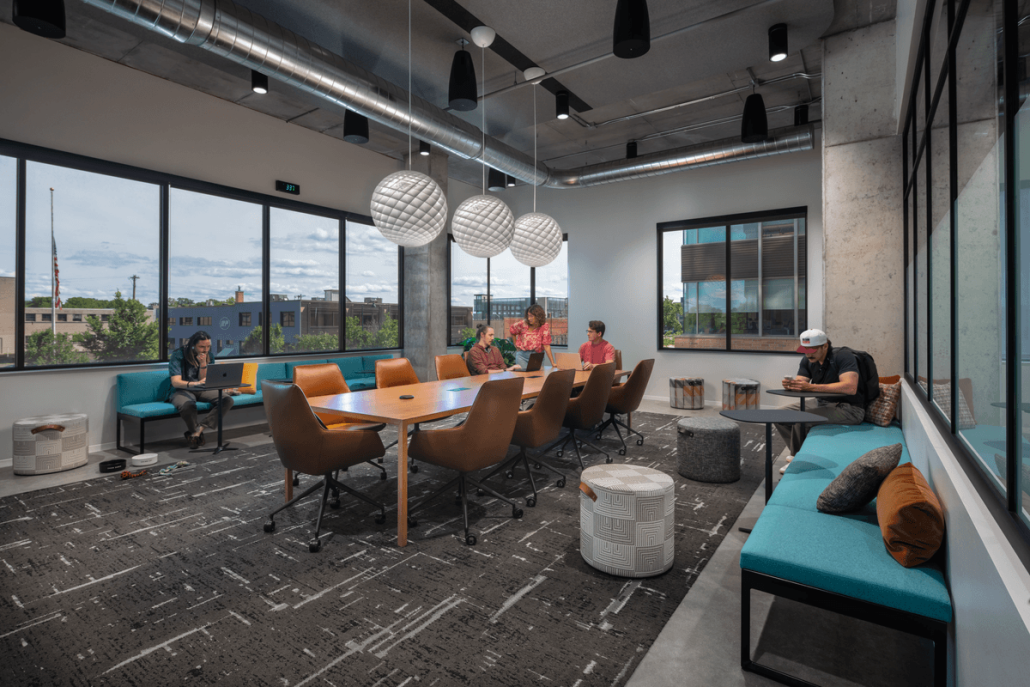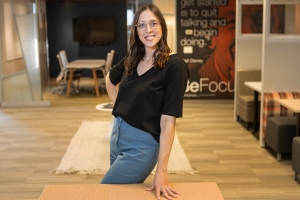Designing Places That Reflect Your Values
Every workplace tells a story about cultures, values, and identity. From the layout of desks to the colors on the walls, the design of a space communicates who a company is and what it values. At LERDAHL, we believe that workplace design isn’t just about aesthetics, it’s about creating environments that embody an organization’s mission, culture, and priorities.
Why Core Values Matter in Workplace Design
When companies integrate their core values into the physical environment, they strengthen employee engagement and retention. A workplace that authentically reflects its culture fosters a deeper sense of belonging, making employees more likely to stay and thrive. Values like collaboration can be reflected in group work areas where employees can collaborate with ease.
A workplace that authentically reflects its culture fosters a deeper sense of belonging, making employees more likely to stay, engage, and thrive. When people feel that their surroundings align with what their organization values, they develop a stronger emotional connection to their work and to each other. Beyond aesthetics, design becomes a strategic tool for reinforcing purpose and connection. It sends a clear message: this is who we are, and this is how we work together.
Uncovering Values Through Design
Values often reveal themselves early in the design process. When clients share their project goals, they are also sharing what matters most to them whether it is equity, transparency, collaboration, or sustainability. For example, when a client emphasized equity, our design team ensured that workstations and resources were distributed fairly across the organization. By listening closely, we translate values into tangible design elements.
Balancing Aesthetics, Brand Identity and Culture
Some organizations want their brand identity to be blended directly into physical space through colors, logos, or mission-driven statements. Others are more focused on the lived experience of employees – how the space feels and functions day to day. From a designer perspective it is to find the right balance between aesthetics and values, ensuring that the workplace design both looks inspiring and functions with purpose. “More often, values are what drive design early in the process, because it’s the functional decisions—layout, space types—that set the tone,” says Maddie Kranda, Manager, Interior Design at LERDAHL.
From Vision to Functional Workplace Design
While visual identity matters, values often shape the fundamentals of a workplace design long before finishes and furniture are chosen. They inform how space is allocated, whether offices have doors or glass walls, how collaboration areas are placed, and even how employees and guests are greeted when they walk in the door. For instance, a company that values transparency might use glass-fronted offices or lower workstation panels to reflect openness and accessibility. These subtle design choices help reinforce trust and approachability.
Workplace Design Trends: Wellness, Flexibility, and Belonging
Over the last decade, companies have increasingly prioritized wellness, flexibility, and belonging in their spaces. Cafes, lounges, and wellness rooms have become central in workplaces. These areas foster connection and give employees places they genuinely want to be, not just where they must be.
Our Approach
What makes our approach unique is that we start with listening. Every client has a different story, and our job is to translate that story into a space that reflects their identity and values. Rather than offering one-size-fits-all solutions, we tailor each project to align with what matters most to our clients and their people.
“One of the most rewarding parts of our work is seeing how employees use spaces once they’re complete,” says Maddie Kranda.



